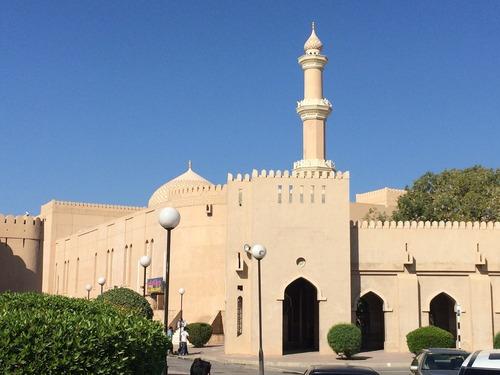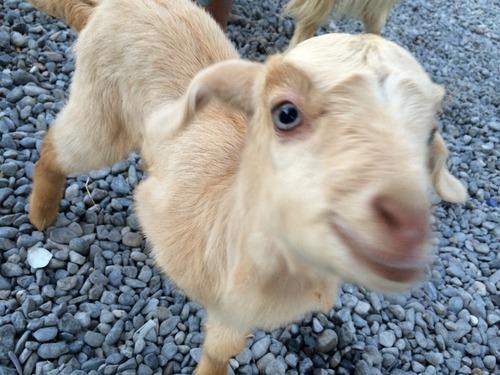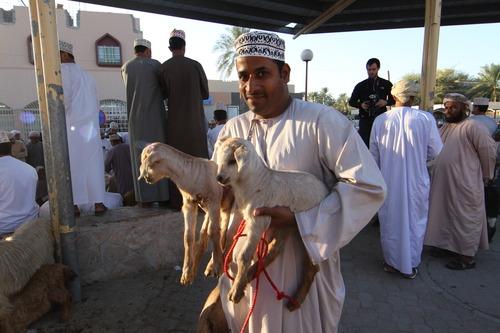In the Middle Eastern country of Oman, in the ancient northern town of Nizwa, history comes to life every Friday as an ancient, fascinating form of banking takes place.
It doesn’t involve ATMs or bank accounts, but rather livestock.
Since the Queen of Sheba, not much has changed at the Nizwa cattle market, except perhaps the mode of transportation used to get the livestock to market. Standing in the shadow of the Nizwa Fort, hundreds of cattle traders and buyers surround a circular area. Goats, then cows, are paraded around, and a loud, lively bidding process begins.

Photo: Nizwa Fort (Kristina Cafarella)
The fatter cows and goats are sold for meat and the studly ones for breeding, but most of the livestock is sold for investment.
“I will buy this goat today and then sell it for more next week,” a man called Mahmoud said of his most recent purchase, describing a physical version of what modern day traders call flipping.
Mahmoud’s purchase, an adult long-haired goat with one horn that was chewing on his pant leg, set him back $400 — but he was hoping to get $600 for it within the month.
“Then I will buy more,” he said.
Related: WATCH: Welcome to Oman: The 2015 ‘It’ Destination

Photo: A young goat (Kristina Cafarella)
Baby goats with their umbilical cords still attached are snapped up for around 100 rials (at an exchange rate of $3 per rial, that’s expensive). Cows, because they cost more to maintain, are at least six times more.
And high-quality animals can cost more than a car.
Last week a goat sold for the rial equivalent of $6,000, my guide Qais said. “It was a breeder. But most are sold for a few hundred rials, fattened up, and sold again within a few weeks for more money.”
Related: WATCH: How to P*ss Off the Locals in Mexico

Photo: Goats for sale (Kristina Cafarella)
